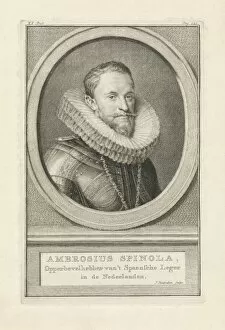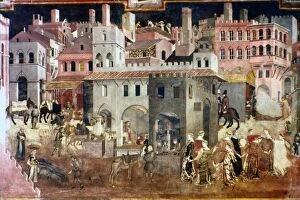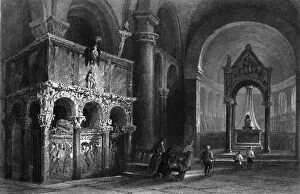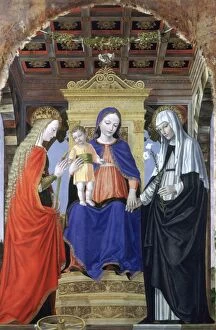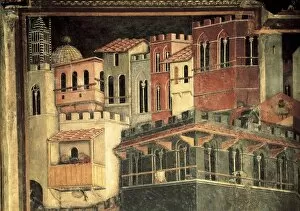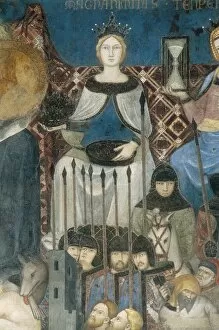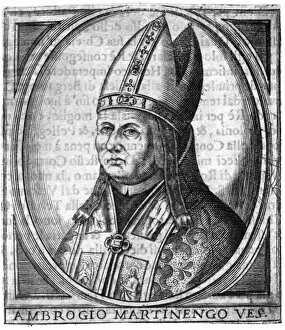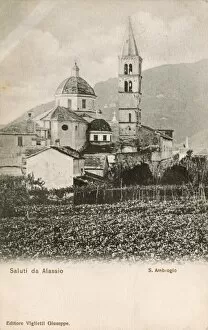Ambrogio Collection (page 2)
Ambrogio Lorenzetti, a renowned artist of the 14th century
All Professionally Made to Order for Quick Shipping
Ambrogio Lorenzetti, a renowned artist of the 14th century, left an indelible mark on the art world with his masterpiece "The Effects of Good Government in the Countryside. " Painted between 1338 and 1340, this detailed fresco captures the essence of harmonious governance. Lorenzetti's brushstrokes bring to life a utopian vision where peace and prosperity reign supreme. The countryside depicted is teeming with abundance; lush fields yield bountiful crops while livestock roam freely under clear blue skies. Villagers engage in various activities: farmers tend to their land, traders exchange goods at bustling markets, and children play joyfully amidst nature's embrace. This artwork serves as a testament to Ambrogio Lorenzetti's unparalleled talent in capturing not only physical beauty but also societal harmony. Through intricate details and vibrant colors, he conveys how good governance can transform communities into thriving havens. Beyond his artistic prowess lies another notable figure named Ambrogio Spinola. A military strategist hailing from Genoa, Spinola was revered for his tactical brilliance during battles fought across Europe. His name became synonymous with victory as he led armies to triumph against formidable foes. Meanwhile, another prominent work attributed to an the statue of Saint Barbara by Ambrogio Parisi. Crafted between 1676 and 1719, this masterpiece stands tall within Chur—a symbol of devotion and faith that transcends time. Speaking of devotion, St. Ambrose takes center stage in various artworks throughout history—his influence extending far beyond religious realms. From thrones depicting him made out of wood to figurative panels adorning domes and tambours in cathedrals like Genoa's Duomo or Milan's Basilica di Sant'Ambrogio—the legacy of St. Ambrose endures through these magnificent creations. In Milan specifically lies one such testament to St.


